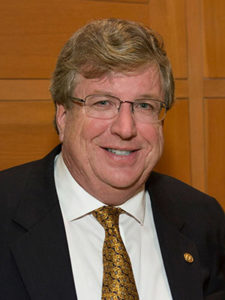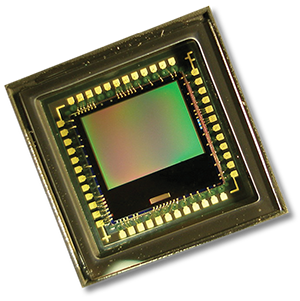Eric Fossum : The Inventor of Active Pixel Sensor
Due to the high demand for mobile phones and digital camera, the production and development of image sensors have become an integral part of existing technology. And, among all the image sensors developed till date, active-pixel sensor (APS) is the widely used one, especially CMOS (complementary metal-oxide-semiconductor) APS. These image sensors are extensively used in smartphone cameras, digital pocket cameras, digital single-lens reflex cameras, and probably, in every other present-day camera you can name.
The history of these image sensors goes back to 1985 when Tsutomu Nakamura started working on the charge modulation device active pixel sensor. But it was Eric Fossum, who brought a giant wave of development in this field. So, next time you take out that pocket camera to take photographs, it’s Fossum you should be thankful for.
Early Life and Education of Eric Fossum
Born into a family in Simsbury, Connecticut, Fossum went to a local public school. From a very tender age, he developed an interest in science and engineering. So he spent the Saturdays at Talcott Mountain Science Center in Avon CT. In 1979, he graduated from Trinity College with a B.S in physics and engineering, followed by receiving his PhD in electrical engineering, in 1984 from Yale University.
Fossum’s Academic Career, Research and Invention

After receiving his PhD, Fossum joined Columbia University as a professor in 1984. During his time at the university, he, along with his students, researched on CCD (charge-coupled device) focal-plane image processing and high-speed III-C CCDs. In 1990, Fossum joined the NASA Jet Propulsion Laboratory in California Institute of Technology and continued his research on the image sensor field. There he developed a modified version of the image sensor with intra-pixel charge transfer and un-pixel amplifier with more modifications and additional features. While he was working in the laboratory, Daniel Goldin, the then NASA-Administrator, wanted something faster, better and cheaper for the space missions. This led Eric Fossum to come up with CMOS APS, which today is incorporated in phone cameras, DSLRs, medical equipment, and automotive safety systems, etc.
According to Fossum, the growth in technology during the early 1990s was at a very slow rate, which led him to establish Photo bit Corporation along with his then-wife, Sabrina Kemeny, to develop and commercialize APS technology at a faster rate. In 1996, he joined the board as chairman and also as the chief scientist. In 2000, Fossum became the CEO of the company, which after a year came under the acquisition of Micron Technology. Even after the acquisition, he remained the part of the company and was named a Senior Micron Fellow. But in 2003, Fossum left Micron. In 2005, he joined at SiWave Inc. as the CEO and worked with the company for two years.
Eric Fossum, in 1986, founded the IEEE workshop on CCDS, which was later renamed as International Image Sensor Workshop.
He also had a sheer interest in robotics, and hence, he partially sponsored the Trinity College Fire-Fighting Robot Contest in 2007. In 2010, Fossum joined the Thayer School of Engineering to teach and conduct research on Quanta Image Sensor and also to coordinate the PhD Innovation Program.
Achievements
Throughout Fossum’s academic career, he had been a recipient of ample of awards. His was in 1984, which was the Yale’s Becton Prize. In the same year, he was honoured with the IBM Faculty Development Award. He also received the National Science Foundation Presidential Young Investigator Award in 1986, and within the next decade, he bagged NASA Exceptional Achievement Medal. And, this is just a mere preview of his glorious achievements.
Recently, in 2017, Fossum was honoured with Queen Elizabeth Prize for Engineering, which is probably the biggest prize for an engineer. It’s a cash prize of £1 million, generally given to the engineers for inventing something which is globally beneficial.
Life after Retirement
Fossum founded Photobit in 1996 followed by another company Siimple within few years. But, he stepped down from every position, and finally, retired from his business life in 2010. He then moved to New Hampshire.
He was quite happy with his decision to leave his entrepreneurial life because he decided to embrace the retired life and pursue teaching. And thus, he joined Thayer School of Engineering to stay active in the journey of innovation and contribute to the technology as far as he can.

Annasha Dey is an NIT student, who apart from studying engineering is also a content writer. She has a great interest in photography, writing, reading novels, and travelling as well. She is a foodie who loves socializing and hanging out with her friends. She is also a trained Kathak dancer and a big fashion enthusiast. Dey also loves watching TV series, which includes F.R.I.E.N.D.S. and Big Bang Theory. To be a better writer she prefers to read more
